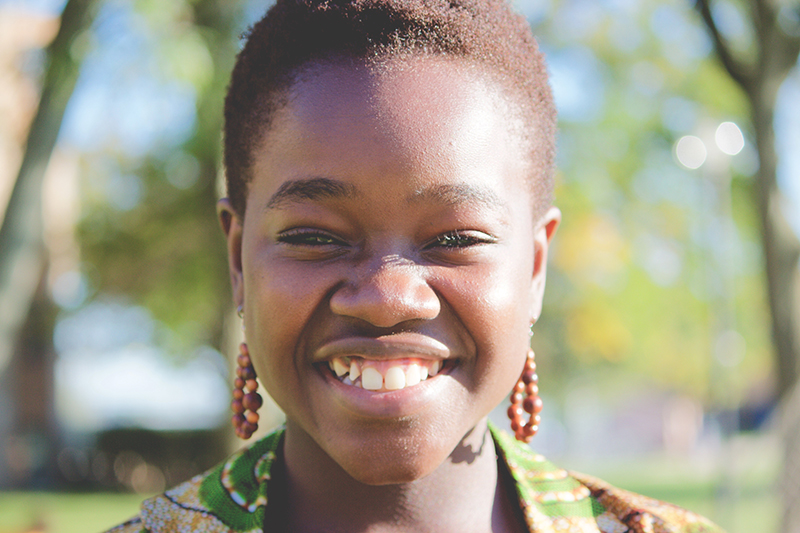There needs to be an internal acknowledgment by everyone that there is a lack of diversity at Goshen College, and that the representation of people of color and more significantly women of color on faculty and the student body is embarrassingly evident.
I have taken it upon myself to try and really understand what diversity means to me. You know, how does it affect me? What will diversity do for me? What can I do for diversity? But the many times I have tried to answer this question I always run into a mound of self-doubt. The mound, in its structure, is greatly elevated, however I can get over it and go to the other side pretty easily but I somehow manage to come right back to where I started.Here at Goshen College the dialogue of inclusion is rather progressive, yet even the slight allusion to the word “diversity” leads to unease and conflict. We can’t preach what we can’t teach. We can’t say that we are moving forward culturally, when people have to pay thousands of dollars to go to a different continent to experience what we should be able to experience at Goshen College.
You are probably reading this while you are sitting at Java, or standing, or walking to class or probably on your iPad in the middle of your 2-hour lab. But do me a favor, look up and look around you. How much diversity do you see around you right now at this very moment? Better question: what’s your definition of diversity?
Diversity can be defined as different things to different people, truth being that we can’t pinpoint it to one specific notion. My own definition of diversity is pretty distorted and probably misleading. Nonetheless, it goes beyond the line of skin color or how many countries you have been to or how many languages you can speak and how many ethnic friends you have. My definition stretches into the belief that gender equality should always be taken into consideration. And that it sounds absurd when I hear stories where a label of “diversity” is placed on a group where one woman and one man of color is placed in higher positions yet the leadership ranks of the academic world still continue to be predominantly white and male.
I didn’t know what I was going to write when I started this piece. It took me a lot of thinking and deep emotional digging: “Who am I? Am I the space leftover the diversity quota? Am I the box checked yes for black?” and finally an “Aha!” moment. I wrote this piece for every woman, man and child who sacrificed their lives for the liberation of women and people of color. And that every time we refuse to tackle the problem of diversity, the voice that preaches divide and conquer wins.
We can’t keep catering to the belief that throwing a bunch of people from different places into a society with no representation advocates for diversity. We need something tangible. Something there for us to see, consume, listen to and learn from. We need a story with quality that will help us move to quantity. We need to see that each person’s story is valid, in the way that I see the validity of my story of blackness on this campus.


